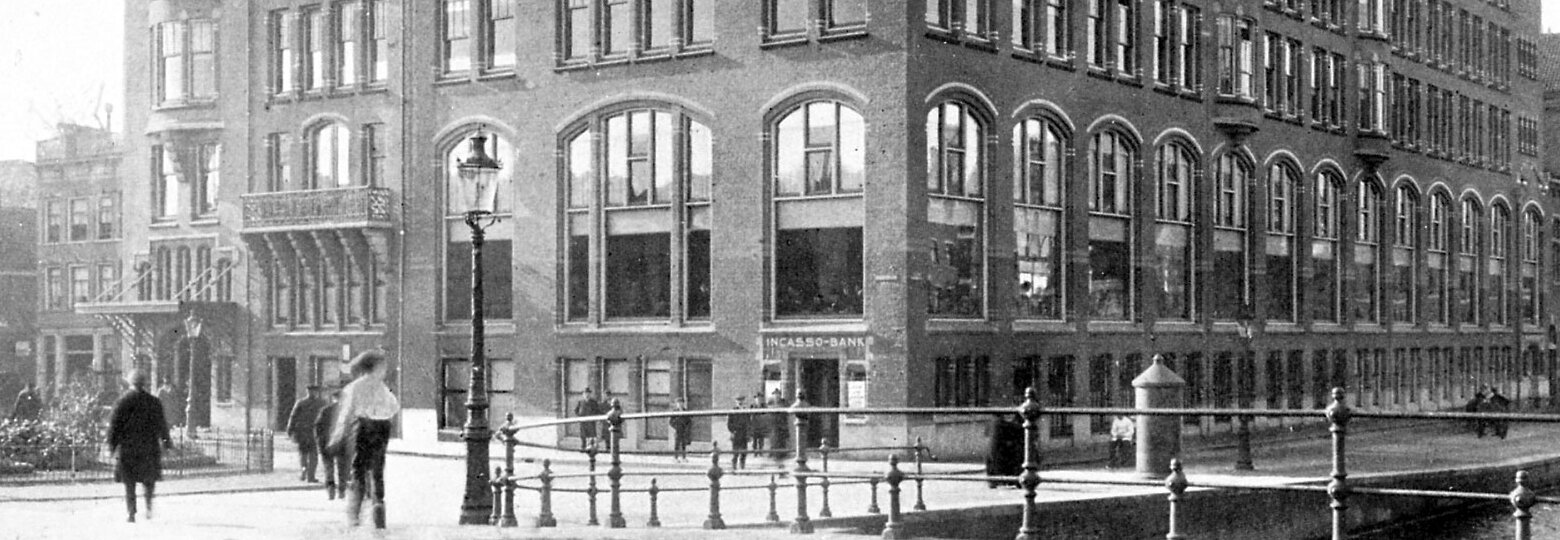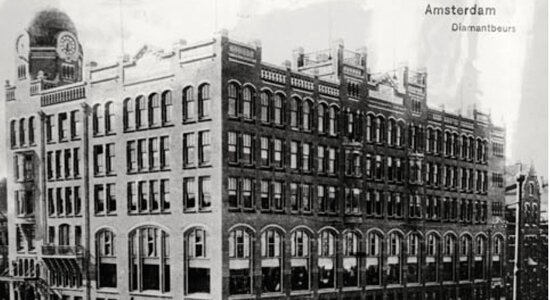
THE HISTORY OF THE DIAMOND EXCHANGE
The first modern diamond exchange was established in 1881. It followed the discovery of massive rough diamond deposits in South Africa, which had precipitated a flood of newly mined merchandise into the European trading centers, the largest of which were Amsterdam and Antwerp. Conditions were chaotic, with dealers meeting in crowded cafes, where lighting was poor, security lax and there were and no certified scales and weights.
To remedy the situation, a group of Dutch dealers set up a club in a building in Amsterdam, which they called the Central Diamant Handelsbond. Featuring a weighing station and a spacious and well-lit trading floor, it provided a safe location to meet and do business. Within just five years, the club had 750 members.
In Antwerp, the city’s first diamond exchange, the Diamantclub van Antwerpen, was established in 1886. It is today the world’s oldest continuously-operating diamond exchange and is one of four such institutions operating in the Belgian center. Within just several years other bourses were established in other European cities.
The first international diamond organization was set up in 1907. Called the International Federation of Diamond Bourses (IFDB), it operated until the outbreak of World War I in 1914. It regrouped in 1928, but disbanded before the start of World War II.

The Central Diamant Handlesbond, established in Amsterdam in 1881.

The trading floor of Antwerp’s Beurs voor Diamanthandel.

The entrance to New York’s Diamond Dealers Club.
Across the Atlantic, the U.S. diamond industry took off in the 1920s and gathered steam with the establishment of the New York Diamond Dealers Club in 1931.
In pre-independent Israel, the first diamond trade organization was established in 1937. It would develop into the Israel Diamond Exchange, which is the largest diamond bourse in the world today.
The revival of the diamond market after World War II and the growth of the trade outside of Europe revived calls for a single organization that would help regulate trading practices internationally and speak on behalf of the industry. Thus was established the World Federation of Diamond Bourses (WFDB).
The late 1940s and 1950s were years of expansion and prosperity for the diamond industry, with bourses set up in the United Kingdom, South Africa, Austria, Italy and France. In the 1970s Germany joined the growing community.
The 1980s saw the growing influence of the diamond trade in Asia, with the acceptance into the ranks of the WFDB of the Diamond Exchange of Singapore and the Hong Kong Diamond Bourse.
The emergence of the Russian Federation following the breakup of the Soviet Union established that country as independent power in the diamond industry. The country’s first diamond bourse, the Diamond Chamber of Russia, was established in 1996. Also joining the diamond trading community during this period were a Japanese bourse, the Tokyo Diamond Exchange, and a bourse in Thailand, the Bangkok Diamonds and Precious Stones Exchange.
The diamond business continues to expand into the new millennium, reflecting the growing popularity of diamond jewelry and the increasing role of the diamond trade. New bourses included the Bharat Diamond Bourse in Mumbai, India; the Dubai Diamond Exchange, and the Shanghai Diamond Exchange, the first diamond bourse in mainland China. They were followed by the Diamond Dealers Club of Australia, the Istanbul Gold and Diamond Exchange in Turkey, and the Panama Diamond Exchange, the first diamond bourse in all of Latin America.
The latest diamond bourses to have been set up and join the WFDB are the Diamond Bourse of Canada in Toronto, and the Korea Diamond Bourse of Seoul, which were recognized by the WFDB in 2014.
There are today 30 diamond exchanges operating in 22 countries, with roughly 15,000 members, who by extension account for the activities of about 25,000 diamond traders. Together they handle in excess of 90 percent of the diamonds reaching the world market.
